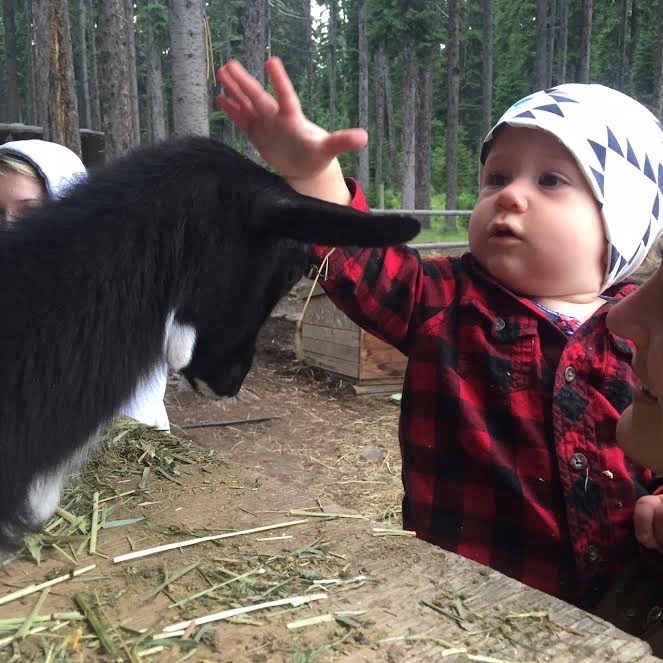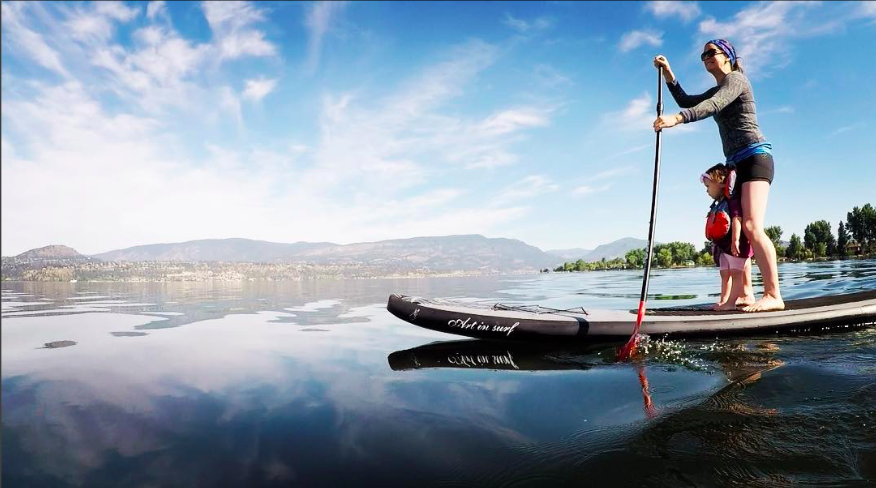10 Ways to Have Sensory Fun in the Sun
Summer break is the perfect time to invest in your sensory system. A healthy sensory system is important for learning, focus, attention, and emotional regulation. You can help feed these hungry sensory systems by… well… having a little fun in the sun!
1. Walk Barefoot
Taking off your shoes and experiencing different textures with your feet will feed the tactile sensory system (sense of touch) and enhance proprioceptive feedback and balance. Sand, grass, rock, tree,
2. Go Swimming
Moving through water is a major sensory experience; it influences tactile, proprioceptive, and vestibular systems. Using arms and legs in a coordinated fashion when learning to swim supports cross-crawl patterning in the brain. Somersaults and diving down deep are fun for the vestibular (inner ear) system too!
3. Stand Up Paddleboarding
This is one of my new favourites. Standing barefoot, working on barefoot and proprioception, while out on the water is so nourishing for the body and soul. This activity also works as brain-gym because you need to cross the midline to paddle.

@benjamin.j.stevens on Instagram
4. Get Buried in the Sand
Warm, rough, heavy sand weighing down your foot… leg… whole body! It’s another good day for the tactile (touch) and proprioceptive systems! Your brain appreciates the heavy, deep squeeze long your joints and muscles; it can have a nice grounding effect. Plus it’s fun to get buried AND to bury others.
5. Climb a Tree
Advanced sensory students only. Climbing a tree requires coordination of upper and lower limbs, left and right, grip strength, and balance. And you get to enjoy a nice peaceful view from the top.
6. Face Painting
Unlike the deep touch sensors basking in the sand while beeing buried, body paint, face paint, and henna stimulate different nerve receptors that specialize in light touch. This can be challenging for certain children, so the prize outcome of looking like Spiderman at the end can be just the right motivation to work on sitting still and desensitising to light touch.
7. Swing, Spin, & Roll
The things that come so naturally are often the best! Swinging back and forth on a tire swing or hammock, spinning round holding your partner’s hands, and rolling down a hill are literally your vestibular systems favourite things. Check for rocks first! I have a good scar on my head for that lesson.
Petting Zoo at Beaver Lake
8. Petting Zoo
Go touch stuff! Pet baby kangaroos. Find a petting zoo or therapeutic farm. See if your local aquarium has a Touch Tank. But take it slow. For some kids, this is a big barrier activity, so if anxiety is high, take baby steps. Once they are into it, it’s an extremely rewarding experiencing, feeding both their touch system and encouraging a healthy bond with animals. Gentle, please!
9. Jump Rope
Back to the classics. Skipping rope challenges coordination and motor skills. It’s also the item on this list that will give you the biggest fitness challenge!
10. Play Outside All Day
Kids need A LOT of movement. Every day. From day one, our brain develops based on our movement patterns and that doesn’t stop once we start walking! Growing brains and bodies are built to move all day long. Moving your body through space utilizes all your sensory systems in some way. Studies consistently show improvements in attention and focus and learning when physical activity is increased (not to mention all the other health benefits). More research is being done now showing how doing these activities outside bolsters that impact even more. Play outside, all day, 8-hours like it’s your job. Go to work!
BONUS: Get Bored.
Though it may not challenge a specific sensory system directly, being bored is good for you. Allowing time and space for freedom of thought will stimulate creativity. It may be tricky at first (both for you and your kids), but it is a practice worth exercising. Start small. Don’t give in to organizing and scheduling every minute and to coming up with an activity as soon as your child’s attention starts to wane. It will take deliberate effort on your behalf at the beginning, but once they catch on, well, then you’ll have other things to worry about (like “where are they now?” and “how did that get there?”), but I promise it is worth the self-development.
Have fun!


